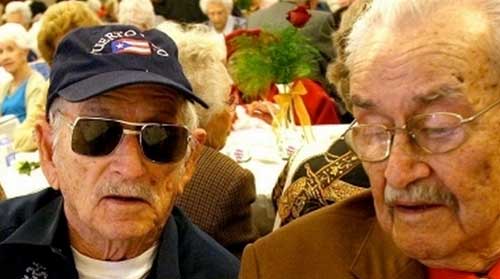Elders’ abuse is on the increase in California and the entire nation
by Araceli Martínez Ortega
La Opinión/New America Media
LOS ANGELES–When Esther González, 74, was having the plastic bag changed that collects her feces, she felt a strong shove.
“Please do not push me,” she told the caregiving aide, who was cleaning her at the nursing home where she lives. In response, the caregiver used a hook from the plastic bag to strike González on her leg.
An Abusive Aide
Esther González, a Guatemalan immigrant, begged her caregiver not to mistreat her. “Sorry, sorry, it was an accident. The woman [aide] told me six times,” she recalled.
That was the first time that her caregiver hit González at her Culver City nursing home.
At other times the caregiver mistreated her psychologically and verbally. “She used to tell me words she made me feel bad. She scolded me. She was very bad tempered. She turned me over roughly and asked me to move very fast when she was cleaning me,” González said.
As soon as she could, after the caretaker hit her with the hook, González called her son Luis.
“I was crying when I explained to him what happened. I felt sad, angry. I was deeply hurt–I was never treated this way before. Everybody else at the nursing home had been really nice,” she said.
With the support of her son, González, who had always worked as a nanny and housekeeper, protested the abuse.
“She no longer works here,” González said with a sigh of relief.
Thousands of Victims
Information released during the Gerontological Society of America (GSA) Annual Scientific Meeting in Washington last November, indicated that one in 10 Americans over age 60 is victimized each year by some type of abuse, often by those who care for them. In particular, said experts, abuses have increased in nursing homes and other elder care facilities.
Despite that so many seniors suffer from elder abuse, this problem remains largely hidden. For every case that comes to light, experts estimate, 23 do not.
Elder abuse takes many forms, such as physical, as in the case of Esther González. But it can also be psychological, sexual or financial, and it can involve deliberate neglect and abandonment.
New research from the Weill Cornell Medical University, in New York City, and Cornell University in Ithaca, N.Y., found that hostile, inappropriate and disruptive behavior among nursing home residents, such as with Esther González, is a growing problem, including widespread.
“These findings suggest that these altercations are widespread and common in every day nursing home life,” said Karl Pillemer, PhD, professor of gerontology in medicine at Weill Cornell, and the Hazel E. Reed Professor at Cornell University.
LA’s 500 Cases
The City and County of Los Angeles saw an increase of 500 cases of elder abuse in the last year at the nursing homes, assisted-living facilities and board-and-care homes.
“Abuse in nursing homes and care facilities for the elderly is a problem that occurs throughout the country and the state,” said Molly Davies, vice president of Elder Abuse Prevention and Ombudsman Services at WISE & Healthy Aging. The organization contracts as the long-term care ombudsman service or the City and County of Los Angeles.
“Most cases of abuse are perpetrated by other residents, often young adults with disabilities, followed by abuse by staff,” she said.
Many of the nursing homes or other facilities where elders live are not exclusive to older people, but include those ranging from ages 18-100.
Davies said the lack of supervision and activities in nursing homes and board-and-care homes propel abuse.
“Sometimes it happens because residents are bored, have nothing better to do. Or it’s because at the nursing homes, people who are incompatible, are mixed within the same room or area,” she said. Younger people with mental health or substance-abuse problems may abuse elders in these situations.
The worst, she added, is that the abuse of seniors is poorly reported in nursing and care homes for fear of retaliations.
Abuse of Latino elders
Davies said she thought that among Latino seniors, abuse happens to a lesser extent.
However, in 2012, a study [http://tinyurl.com/nxuj4o2] by the University of Southern California showed chilling figures among low-income Latino seniors in Los Angeles: 10.7 percent had been physically abused; and 16.7 percent had been exploited financially.
Across all races, the study noted that each year, there are more than 5 million cases of elder abuse in U.S. facilities, homes and community settings.
Araceli Martínez Ortega wrote this article or La Opinión with the support from the Journalists in Aging Fellows Program of the Gerolontological Society of America and News America Media, sponsored by AARP.



